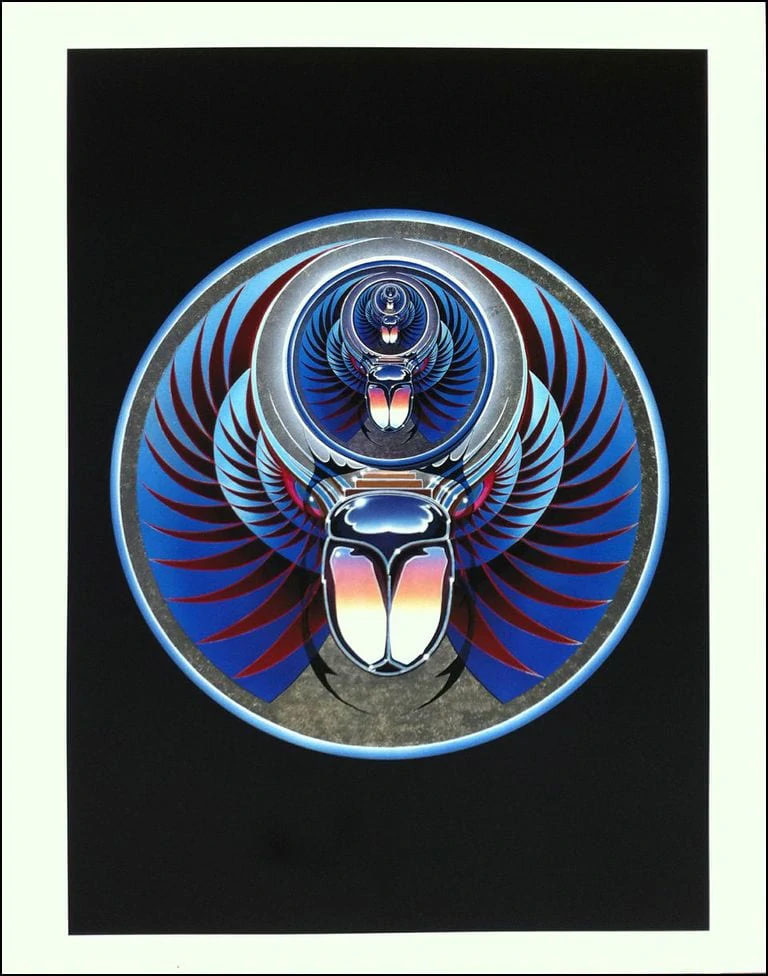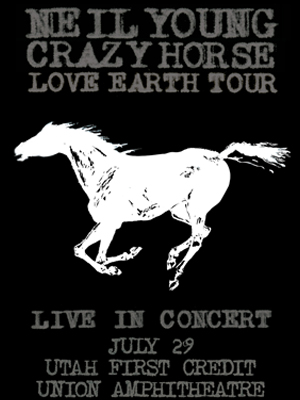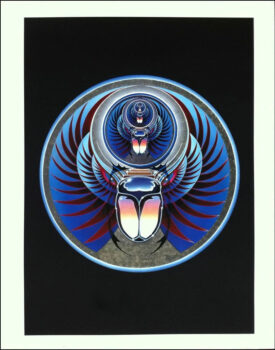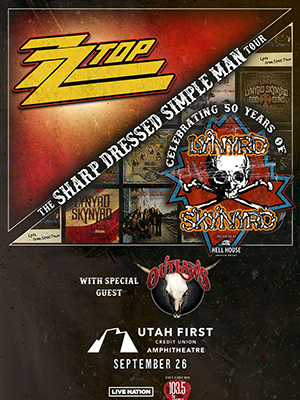A Visual “Journey” with Stanley Mouse
Learn more about Stanley Mouse’s relationship with the band Journey and the creation of the beetle with wings that elevated the band to icon status.
By bonneville on March 15, 2024
Introduction
Hailing from San Francisco, the rock band Journey was composed of all-star members from Santana, the Steve Miller Band, and Frumious Bandersnatch. The members of the original lineup–including Neal Schon on guitar, Gregg Rolie on keyboards and lead vocals, Ross Valory on bass, George Tickner on rhythm guitar, and Prairie Prince on drums–intended to play as a backup group to established Bay Area bands. However, they decided to take center stage after their first live performance in Hawaii in 1973. They would go on to be one of the best-selling bands of all time.
The first three records Journey released were to various acclaim, with the record label almost dropping them before they released “Infinity” in 1977. Released to great success, that album marks a shift for the band. Not only did their musical style notably evolve, but it also was the beginning of their relationship with artist Stanley Mouse of Mouse Studios. In their subsequent releases, their albums feature a new piece by Mouse, who created surreal and grotesque works of art, along the infamous scarab beetle with wings, which defined the band’s imagery.
Take a look with us as we explore Mouse’s work more in the context of Journey. See them tonight live at the Maverick Center!
Journey Through Time: A Psychedelic Odyssey
Throughout their career and through several changes to their lineup, Journey released several essential albums that made waves in the music industry. “Infinity” introduced Steve Perry as the band’s lead vocalist and spawned hits like “Wheel in the Sky” and “Lights,” while subsequent albums like “Escape” (1981) and “Frontiers” (1983) solidified Journey’s status as arena rock superstars. Iconic tracks such as “Don’t Stop Believin'” and “Separate Ways (Worlds Apart)” are anthems to this day, influencing countless musicians and reshaping the landscape of rock music.
From the cosmic imagery of “Infinity” to the iconic scarab beetle featured on the cover of “Escape,” the band’s album covers have served as visual representations of their sonic journey. Each cover art encapsulates the themes and emotions explored within the music, giving fans a glimpse into the creative vision behind the songs. In an era where album artwork was often as important as the music itself, Journey’s collaboration with artists like Stanley Mouse helped establish a visual identity that resonated with listeners and contributed to the band’s enduring legacy.
Stanley Mouse’s Weirdo Art
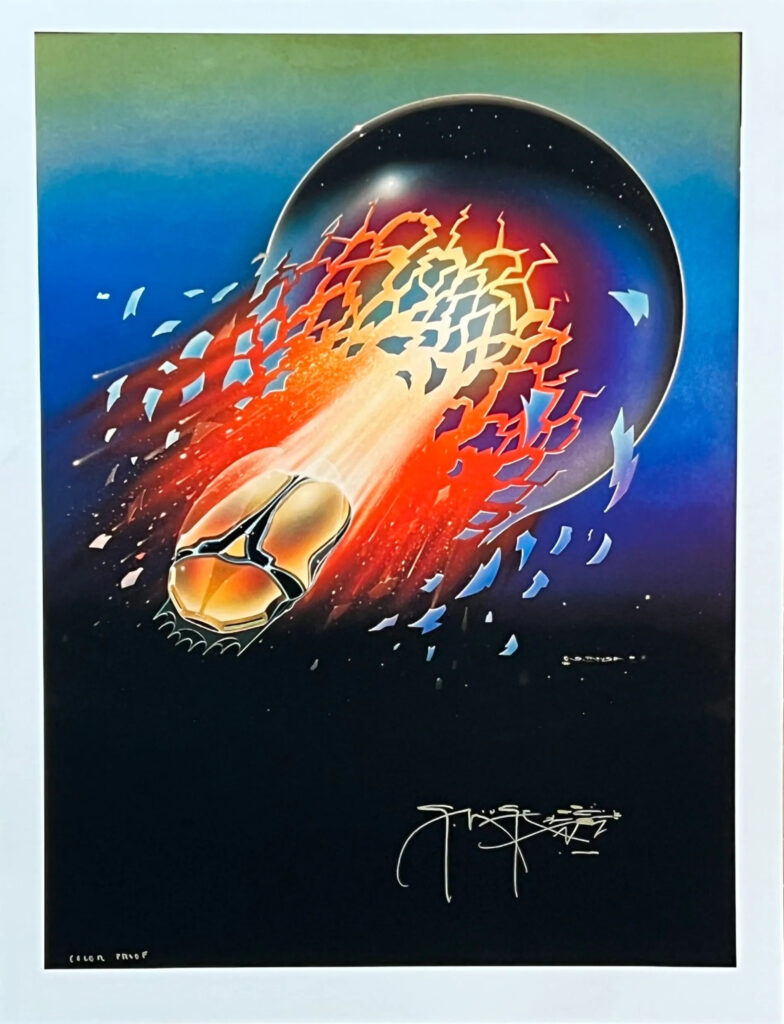
Mouse, also from California, was the mastermind behind the Grateful Dead’s imagery of the skeleton with roses, along with other famous rock artists during the era. He was fascinated by the “weirdo hot rod” art movement that had its heyday in the ’50s in California. This surreal art movement centered around grotesque and disfigured popular imagery, propelled by Big Daddy Roth, who made T-shirts at custom car shows. It became known as the “Kustom Kulture” scene in America.
Mouse eventually partnered with fellow artist Alton Kelley to create Mouse Studios and The Monster Company. Together, this duo created the album cover art for Journey and Grateful Dead, along with more T-shirts and posters for various bands in the Bay Area.
Before making the album art for Journey, the duo was supposed to create art for the late Jimi Hendrix. After Hendrix passed, they connected with Journey and collaborated to develop several album covers over the years.
Audio and Visual Worlds Collide
The collaboration between Journey and Mouse Studios thrives on a seamless exchange of creative energies, where the band’s musical vision intertwines with Mouse’s artistic prowess. This dynamic partnership is a visual testament to the band’s sonic journey. The iconic beetle with wings became a symbol for fans to signal to each other that they were there for the cosmic journey throughout the band’s career. By using these visual components to boost the band’s imagery, Journey nurtured a cult-like following and still gains fans to this day.
Related articles:

